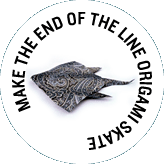Proposals to regulate trade in red and pink precious corals widely used in jewellery were defeated again at the summit of the Convention on International Trade in Endangered Species in Doha.
Three years after a similar proposal was rejected in The Hague, delegates defeated a proposal submitted by the United States to control trade in 31 species of red and pink precious corals (under Cites Appendix II).
The coral proposal failed to make the two-thirds majority of nations in favour that it needed. There were 64 votes in favour, 59 against and 10 abstentions.
The family Coralliidae includes over 30 pink and red coral species, the most commercially valuable precious corals. The species have been fished for millennia, and millions of items are traded internationally each year.
According to the proposal from the United States, the greatest risk to populations of Coralliidae is fishing to supply international trade. Landings have declining by 60-80 per cent since the 1980s and reductions in the size structure of populations in fished areas are equivalent to a loss of 80-90 % of the reproductive modules (polyps).
International demand has contributed to serial depletions of most known populations of pink and red corals, and newly-discovered stocks have been rapidly exhausted.
The two-week did decide by consensus to include several reptiles and amphibians from Central America and the Islamic Republic of Iran in its lists.
Governments did not have any objection to regulating trade in a Guatemalan Spiny-tailed iguana (Ctenosaura palearis) and other three species of iguanas native to central and south-eastern Mexico, the Yucatan Peninsula and Central America. These iguanas are known to be in demand for the international exotic pet trade, mainly in Europe and the United States.
The CITES summit also adopted measures to protect a whole genus of tree frogs from Central and South America that is under pressure owing to habitat degradation and loss, and to the fungal disease chytridiomycosis. Some of these frogs are subject to international trade.
Continuing in the same trend for terrestrial species, a salamander endemic to the Islamic Republic of Iran was also listed by consensus in Appendix I, which means that international commercial trade is prohibited. The Kaiser’s newt (Neurergus kaiseri) is protected in its range State and the main concern is the demand for this species on the international market. Individuals caught in the wild are being illegally exported and find their way into the pet trade for use in aquaria.
Charles Clover
![]()


